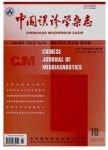建议与咨询
留下您的常用邮箱和电话号码,以便我们向您反馈解决方案和替代方法
- 全部搜索
- 期刊论文
- 图书
- 学位论文
- 标准
- 纸本馆藏
- 外文资源发现
- 数据库导航
- 超星发现
-
法舒地尔对蛛网膜下腔脑出血大鼠海马CA1区自噬作用及对mTOR通路的影响
-
-

-
收藏
引用
-
医学临床研究
2022年 第1期39卷 18-22页
-
作者:
曹宏斌
冯乐霄
陕西省神木市医院
陕西榆林719300 咸阳市中心医院
陕西咸阳712000
-
关键词:
蛛网膜下腔出血
血管舒张药/治疗应用
大鼠
疾病模型,动物
CA1区,海马/病理学
-
来源:
评论
-
-
-
法舒地尔对急性脑梗死患者血清MMP-10、ox-LDL及GSH-Px的影响
-
-

-
收藏
引用
-
医学临床研究
2021年 第2期38卷 240-242,245页
-
作者:
沈育桦
阮琼艳
杨祺
上海市浦东新区人民医院药剂科
上海201200 上海市浦东新区光明中医医院临床药学部
上海201399 上海交通大学附属瑞金医院药剂科
上海200025
-
关键词:
脑梗死
急性病
血管舒张药/治疗应用
基质金属蛋白酶10/血液
脂蛋白类,LDL/血液
-
来源:
评论
-
-
-
法舒地尔联合重组人脑利钠肽对急性心肌梗死患者PCI术后心功能及细胞凋亡因子的影响
-
-

-
收藏
引用
-
医学临床研究
2021年 第1期38卷 94-97页
-
作者:
闫菊英
李烁烁
山东省立第三医院
山东济南250031
-
关键词:
心肌梗死/外科学
急性病
血管成形术,气囊,冠状动脉
血管舒张药/治疗应用
利钠肽,脑/治疗应用
-
来源:
评论
-
-
-
巴曲酶与血管扩张剂治疗突发性耳聋临床疗效观察
-
-

-
收藏
引用
-
陕西医学杂志
2017年 第5期46卷 643-644页
-
作者:
李凯
包涵
张潘英
陈力
陈阳
西安市第九医院耳鼻喉科
西安710054 第四军医大学西京医院耳鼻咽喉头颈外科
西安710032
-
关键词:
听觉丧失,突发性/药物疗法
巴曲酶/治疗应用
血管舒张药/治疗应用
-
来源:
评论
-
-
-
法舒地尔对急性脑梗死静脉溶栓后再灌注损伤的保护作用
-
-

-
收藏
引用
-
医学临床研究
2017年 第12期34卷 2378-2380页
-
作者:
卢婷
易琼
南京医科大学附属淮安第一医院神经内科
江苏淮安223300 南京医科大学附属淮安第一医院康复医学科
江苏淮安223300
-
关键词:
脑梗死
急性病
血管舒张药/治疗应用
再灌注损伤/药物疗法
血栓溶解疗法
-
来源:
评论
-
-
-
自体血回输臭氧联合法舒地尔治疗后循环缺血性眩晕75例
-
-

-
收藏
引用
-
陕西医学杂志
2016年 第9期45卷 1147-1148页
-
作者:
陈鹏
薛常虎
杜翔
郑卫娟
陕西省咸阳市中心医院神经内科
咸阳712000
-
关键词:
眩晕/治疗
血管舒张药/治疗应用
@自体血回输臭氧
-
来源:
评论
-
-
-
红花注射液治疗急性脑梗死80例疗效观察
-
-

-
收藏
引用
-
陕西医学杂志
2011年 第1期40卷 96-97,101页
-
作者:
崔军莉
李元生
袁甫军
陕西省武功县医院内科
武功712200 陕西省咸阳市天王兴业集团有限公司职工医院
-
关键词:
脑梗塞/药物疗法
血管舒张药/治疗应用
血小板聚集抑制剂/治疗应用
对比研究
-
来源:
评论
-
-
-
血管扩张剂及β受体阻滞剂联合治疗肝硬化合并门脉高压临床观察
-
-

-
收藏
引用
-
中国误诊学杂志
2011年 第6期11卷 1324-1324页
-
作者:
康少岩
黄文祥
黑龙江省海伦市人民医院
152300
-
关键词:
血管舒张药/治疗应用
肾上腺素能β受体拮抗剂/治疗应用
肝硬化/药物疗法
高血压,门静脉/药物疗法
-
来源:
评论
-
-
-
血管活性药治疗30例有创动脉血压监测的护理
-
-

-
收藏
引用
-
中国误诊学杂志
2011年 第26期11卷 6496-6496页
-
作者:
李玉凤
河北省复员军人医院
054000
-
关键词:
血管收缩药/治疗应用
血管舒张药/治疗应用
动脉/损伤
血压测定/护理
-
来源:
评论
-
-
-
曲美他嗪对正常射血分数心衰患者治疗效果分析
-
-

-
收藏
引用
-
中国误诊学杂志
2010年 第28期10卷 6850-6850页
-
作者:
边容
赵宇新
秦菘
新疆奎屯市农七师医院心内科
833200
-
关键词:
曲美他嗪/治疗应用
血管舒张药/治疗应用
每搏输出量/药物作用
心力衰竭/药物疗法
人类
-
来源:
评论
-
-
没有更多数据了...
暂无评论